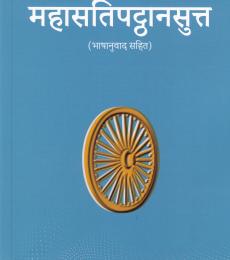Dhammapada * धम्मपद
The priceless teachings of the Buddha are preserved in the Pāli canon, an extensive, detailed, systematic and analytical record. The Tipitaka (which means, literally, "three baskets") is arranged in three divisions: Vinaya Pitaka, Sutta Pitaka, and Abhidhamma Pitaka. Sutta Pitaka is further divided into Dīgha Nikāya, Majjhima Nikāya, Saṃyutta Nikāya, Saṃyutta Nikāya, Aṅguttara Nikāya and Khuddaka Nikāya. Dhammapada is a part of Khuddaka Nikāya.
Dhammapada, the most popular and widely read book in the Tipitaka is a collection of sayings of the Buddha in verse (stanza) form. It consists of 423 stanzas and arranged in 26 Vaggas or chapters with many stanzas arranged like contrasting pairs for e.g. suffering vs. happiness, heedfulness vs heedlessness, wise vs. fool etc. The purpose of this arrangement is to contemplate outcome of each action to choose our course of action wisely for our own benefit.
This book contains translation of Dhammapada and is ideal for Vipassana meditators as well as non-meditators.











